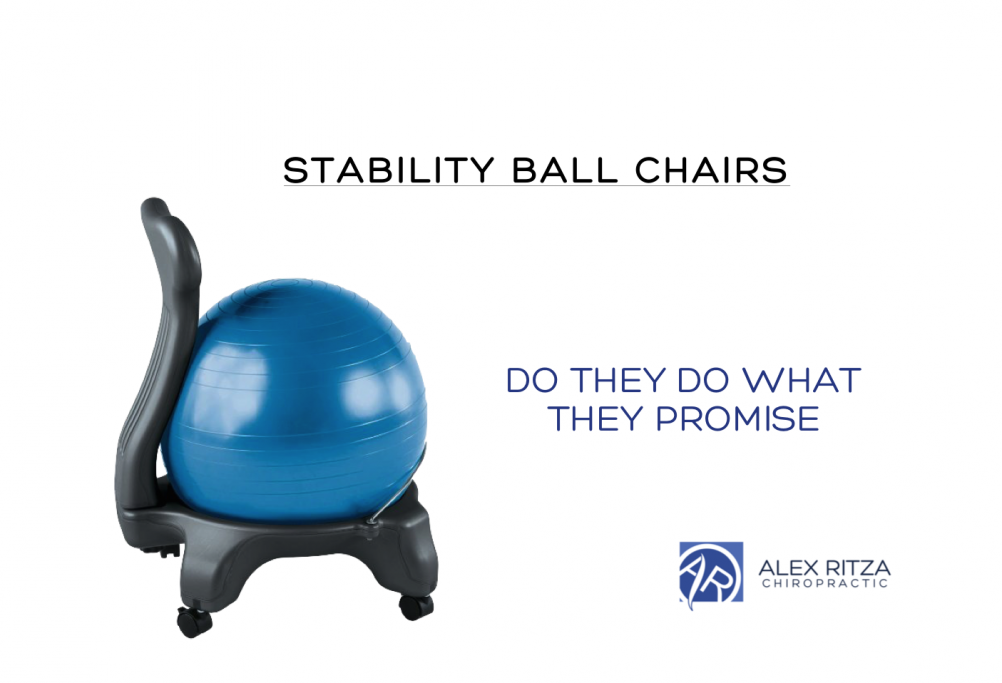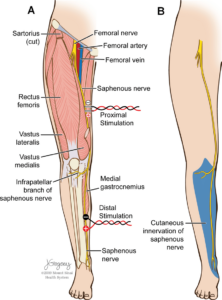Exercise-ball chairs. They seem like they would be a great idea don’t they?
They are advertised as a way to “workout” at the office, strengthen your core, reduce your back pain, and improve your sitting experience at the office.
At first it makes sense and seems like a good idea; “sitting on this unstable surface will make me activate my core, and strengthen it, while simultaneously stabilizing the spine to protect my neck, and back.” While this might make sense as a thought experiment, it does not jive well with our knowledge of spine biomechanics, and back pain pathophysiology.
If we look to how the core and spine work, we understand that not a great deal of strength is required to stabilize the spine; less than 50N or 10% of maximal voluntary contraction. Whenever we move or attempt to sit / stand erect, the core musculature acting like guide-wires to support the spine, and fires to keep the spine from shifting or buckling.
When we exercise, the core fires intensely for a very brief period while the limbs move. You throw a punch and the core fires to stop the spine from giving way. You take a step, the core fires to ensure the body does not fall unsupported against gravity to the ground. On-and-off, on-and-off it fires.
If we are not moving about, the core activates at a very low basal level to stop buckling of the spine. If we are sitting at a chair however, we hope that the chair is acting to support the spine so that the core is not required to fire at a low-level for hours. Like asking the biceps to hold a 5lbs weight for hours on end, your low back would tire just as the biceps would. It is not designed to do the latter and is part of the reason why I ask my patients to move around every 20-30 minutes to unload the most used back muscles and discs.
The demands of sitting on an exercise ball are however very different. It would mean asking your spine to support almost half of your bodyweight on an unstable surface for a great deal of time. Instead of having some support from a good chair holding up your back against gravity, your muscles must work intensely to hold and help stabilize you. And while even those with a strong core may be able to perform this task for a short period, most of us (read = all of us) either tire, or forget to sit upright; we lose out good neutral, protected spine, and slouch.
If one had the ability to sit with perfect posture for hours on end on an exercise ball, while multitasking all of the complex requirements there are at work, they might indeed work. Instead we either get tired, our cores fatigue, or we forget to watch our spine’s position. This logic leads me to believe that these “stability” chairs leave us in a more compromised position, where we slouch, and put the back tissues at greater risk of injury.
The biomechanics suggest using an exercise ball as a chair might not be appropriate. There is also a body of specific research that suggests the same:
“The results of [this] study suggest that prolonged sitting on a dynamic, unstable seat surface does not significantly affect the magnitudes of muscle activation, spine posture, spine loads or overall spine stability”
- Exercise ball chair do not seem to change the posture we use, how active the core muscles are or how much force is put through the spine
In studies with “increased trunk muscle activation, both [studies] reported increased discomfort, suggests that sustained paraspinal muscle activation during unsupported dynamic sitting may be closely linked to the development of discomfort
- Asking the back to hold you up all day instead of using a chair to help support you might lead to greater back pain
This review referenced below, cautioned the use of these dynamic unsupported type chairs (exercise balls), stating that there was little evidence to support they actually resulted in greater trunk activation, and might leave users more likely to experience back pain.
What to do instead?
Have your ergonomist / chiropractor help you set up your chair (something I try to do for all of my downtown patients) or instruct you on how to do so. Even a mediocre chair can be adjusted to provide support for any body type when someone with the knowhow helps you set it up.
OR
Subscribe to the my YouTube page to catch my upcoming video series on proper office ergonomics and how to set up your desk and chair to Office-Proof your back.
References
O’Sullivan, Kieran, et al. “The effect of dynamic sitting on trunk muscle activation: A systematic review.” Applied ergonomics 44.4 (2013): 628-635.




